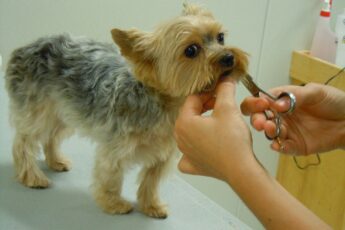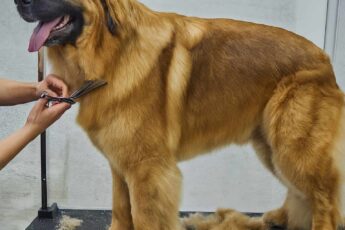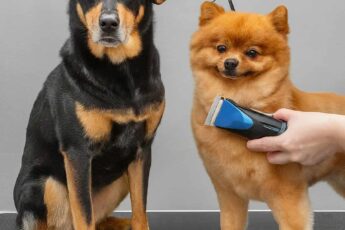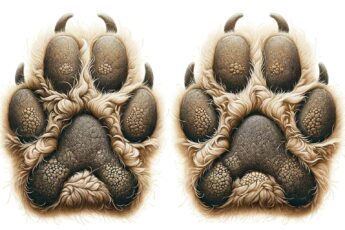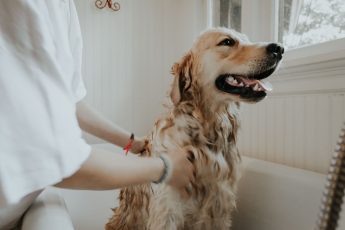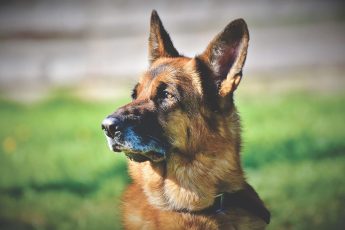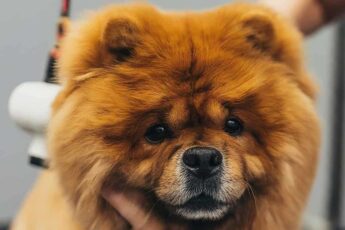Understanding Dog Grooming Self-Service
What is Dog Grooming Self-Service?
Dog grooming self-service means you’re the groomer. You handle everything—brushing, bathing, nail clipping, and ear cleaning. All with your own tools and products. It’s DIY grooming at its finest.
Why Choose Self-Service?
First off, self-service grooming saves you money. Forget those expensive groomer visits. Doing it yourself means more cash in your pocket.
Second, it’s all about control. You decide when and how to groom your dog. No more waiting for an appointment. You can fit grooming into your schedule. Plus, you choose the best products for your pet’s needs.
Finally, it’s a bonding experience. Grooming your dog yourself strengthens your bond. It’s hands-on, personal time with your furry friend. You get to know their coat, skin, and overall health better.
Ready to save money, take control, and bond with your dog? Grab your grooming kit and start today!
What Do You Need?
To groom your dog at home, you’ll need some essential tools:
- Brushes and Combs: Prices range from $10 to $30.
- Shampoo and Conditioner: Good quality dog shampoo costs about $10 to $20.
- Nail Clippers: Decent ones are priced around $10 to $20.
- Towels: A good microfiber towel costs about $10 to $20.
You might need items like a de-shedding tool ($20 to $45) or a grooming table ($100 to $150) for special needs.
How Much Does It Cost?
Initial costs include buying tools. Here’s a rough breakdown:
- Brushes and Combs: $10 – $30 each
- Shampoo and Conditioner: $10 – $20 per bottle
- Nail Clippers: $10 – $20
- Towels: $10 – $20 each
Ongoing costs mainly involve restocking shampoo and conditioner, which is cheaper than regular professional grooming sessions that typically cost $40 to $100 per visit (Chewy) (HomeGuide) (Bestie Paws – Pet Boutique Near Me).
Best Grooming Tools for Dog Grooming Self-Service
| Image | Price | Buy | Title |
|---|---|---|---|
 Top Top | Buy Now | oneisall Dog Shaver Clippers Low Noise Rechargeable Cordless Electric Quiet Hair Clippers Set for Dogs Cats Pets | |
 Top Top | Buy Now | Gimars Titanium Coated Professional 6 in 1 4CR Stainless Steel Dog Grooming Scissors with Safety Round Tip, Heavy Duty Pet Grooming Scissor for Dogs, Cats and Other Animals | |
 Top Top | Buy Now | AIRROBO Dog Grooming Vacuum, Dog Hair Vacuum,12000Pa Strong Pet Grooming Vacuum for Dogs, 2L Large Capacity Dog Vacuum for Shedding Grooming Hair, Quiet, 5 Pet Grooming Tools, PG100 | |
 Top Top | Buy Now | GoPets 2-Sided Dematting Comb - Professional Grooming Rake for Cats & Dogs, Long Hair Deshedding Tool, Undercoat Brush - for Matted & Long-Haired Pets | |
 Top Top | Buy Now | Bonve Pet Nail Grinder for Dogs - Upgraded Dog Nail Trimmers Super Quiet, 2 Speeds, Rechargeable, 2 Grinding Wheels for Small Large Dogs & Cats | |
 Top Top | Buy Now | Go Pet Club 30-Inch Dog Grooming Table, Adjustable Arm Foldable Non-Slip Top, Rust-Proof, Waterproof, Warp-Free Trimming Table for Pets, Black | |
 Top Top | Buy Now | Wahl USA Dry Skin & Itch Relief Pet Shampoo for Dogs – Oatmeal Formula with Coconut Lime Verbena & Pet Friendly Formula, 24 Oz - Model 820004A | |
 Top Top | Buy Now | Bodhi Dog New Grooming Pet Shampoo Brush | Soothing Massage Rubber Bristles Curry Comb for Dogs & Cats Washing | |
 Top Top | Buy Now | Bodhi Dog Natural Dog Cologne | Premium Scented Deodorizing Body Spray for Dogs & Cats | Neutralizes Strong Odors | Dog Perfume with Natural Dog Conditioner | Made in USA (Baby Powder, 17 Fl Oz) |
Choosing the Right Location
Home or Public Self-Service Stations?
You can groom your dog at home or use a public self-service grooming station. Each option has its benefits and drawbacks. Home grooming is convenient and private, while public stations provide professional-grade tools and eliminate the mess from your home.
Pros and Cons
Home Grooming:
- Convenient, no travel needed.
- Your dog stays in a familiar environment.
- All mess is in your control.
Self-Service Dog Wash Stations
- Individual wash stalls or tubs with ramps for easy access.
- Adjustable water pressure and temperature.
- Provided dog-safe shampoos, conditioners, and towels.
- High-velocity dryers to thoroughly dry your dog’s coat.
Additional Services
- Professional staff assistance for nail trimming, ear cleaning, and brushing.
- Add-on treatments like de-shedding, flea shampoos, and deodorizing sprays.
- Grooming tools and supplies are available for purchase.
Convenience and Benefits
- No appointments are needed; walk-ins are welcome.
- Avoid mess and cleanup at home.
- Ergonomic tub heights to prevent back strain.
- Loyalty programs and discounts for frequent users.
- Staff cleans up after each wash.
Setting Up a Grooming Space at Home
Set up a space in your bathroom or laundry room where it’s easy to clean. Keep your grooming tools within reach. A non-slip mat can help keep your dog steady. Ensure the area is well-lit so you can clearly see what you’re doing.
Finding Nearby Dog Grooming Self-Service Stations
Look online for self-service dog wash stations in your area. Many pet stores, like Petco and PetSmart, offer these services. Some grooming salons also provide self-service options. Prices typically range from $11 to $23 depending on the size of your dog (The Spruce Pets) (Hepper).
Choosing where to groom your dog depends on your preferences and your dog’s comfort. Home grooming offers convenience and comfort for your pet, while public stations provide professional tools and less mess at home.
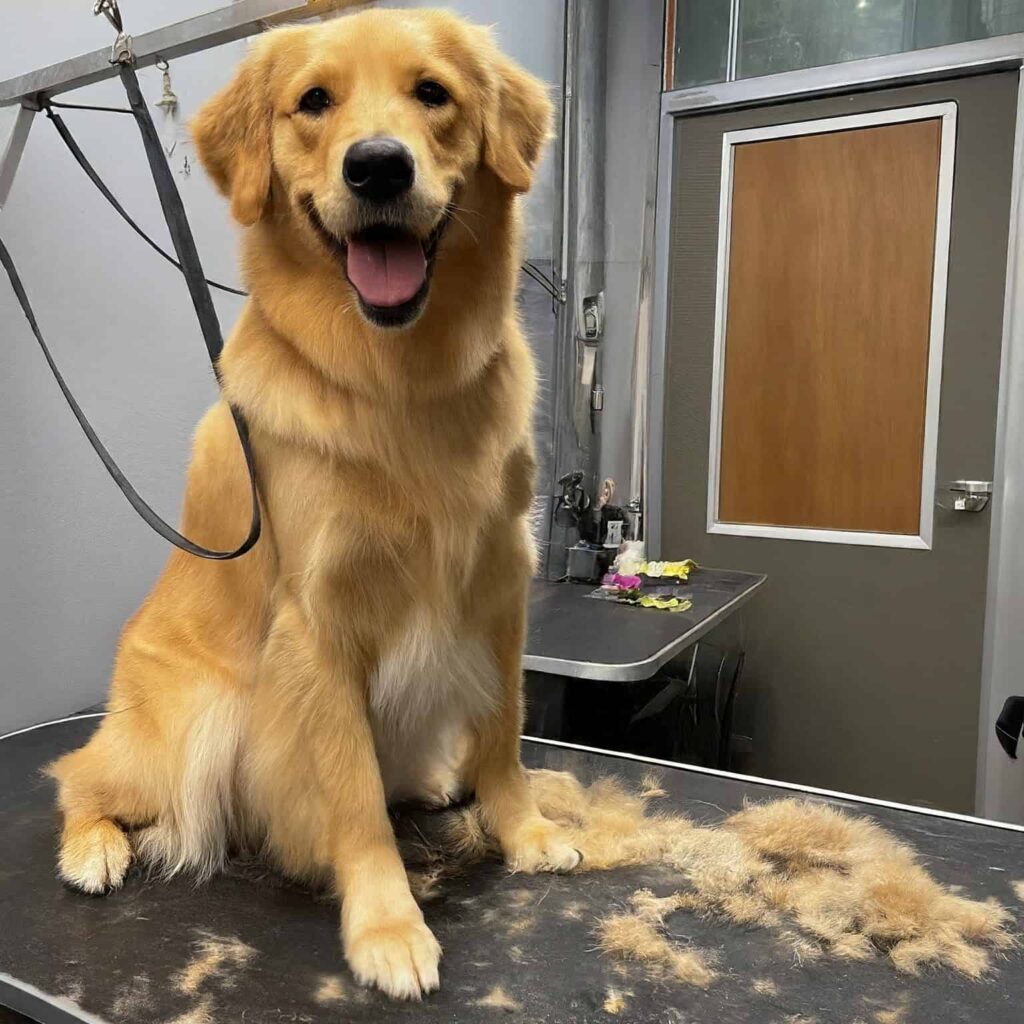
Essential Grooming Tools
Basic Tools
To start grooming your dog, you’ll need a few essential tools. A good brush or comb is vital. Prices range from $10 to $30, depending on the type and brand. Brushes like the Hertzko Self-Cleaning Slicker Brush ($15) are popular and effective for most coat types.
You’ll also need nail clippers, which cost around $10 to $20. Scissors with rounded tips are essential for safety and are usually about $18.
Specialized Tools
Depending on your dog’s coat, you might need specialized tools. A de-shedding tool like the Furminator can cost between $20 and $45. A sturdy pair of clippers is necessary for dogs with thick or matted fur.
The Wahl Deluxe U-Clip Dog & Cat Clipper Kit, priced around $35, is a good option for most coat types. If you need high-end tools, the Andis UltraEdge 2-Speed Detachable Blade Dog Clipper costs about $196 and works well for all coat types.
Safe Handling
Safety is key when using grooming tools. Always use scissors with rounded tips to prevent accidental cuts. Ensure your clippers are not too loud to avoid scaring your dog. Start slowly and give your dog breaks to keep them comfortable. Regularly check and clean your tools to maintain their effectiveness and safety.
Storage and Maintenance
Store your grooming tools in a dry, cool place. After each grooming session, clean the brushes and combs. For clippers, oil the blades regularly to keep them sharp and efficient. Proper maintenance extends the life of your tools and ensures they work well every time.
Preparing Your Dog for Grooming
Familiarizing Your Dog with Tools
Before you start grooming, let your dog sniff and explore the tools. This helps reduce anxiety. Gradually introduce each tool, so your dog doesn’t feel overwhelmed. Use treats and praise to create a positive association with grooming sessions.
Reducing Anxiety
A calm dog is easier to groom. Take your dog for a walk before grooming to help them relax. Playing calming music can also soothe them. If your dog shows signs of stress, take a break and try again later. Patience is key to a smooth grooming process.
Pre-Grooming Walk
A pre-grooming walk can make a big difference. It helps your dog expend energy and become more relaxed. A tired dog is less likely to resist grooming. Plus, the walk allows you to check for any dirt or debris that might need extra attention during grooming.
Checking for Skin Issues
Before you start, inspect your dog’s skin. Look for any redness, bumps, or sores. These can indicate underlying issues that might need a vet’s attention. Regular checks help you catch problems early and keep your dog healthy. Pay special attention to areas like under the collar, behind the ears, and between the toes.
Preparing your dog well makes grooming easier and more enjoyable for both of you. You can keep your dog looking and feeling great with the right tools and a calm approach.
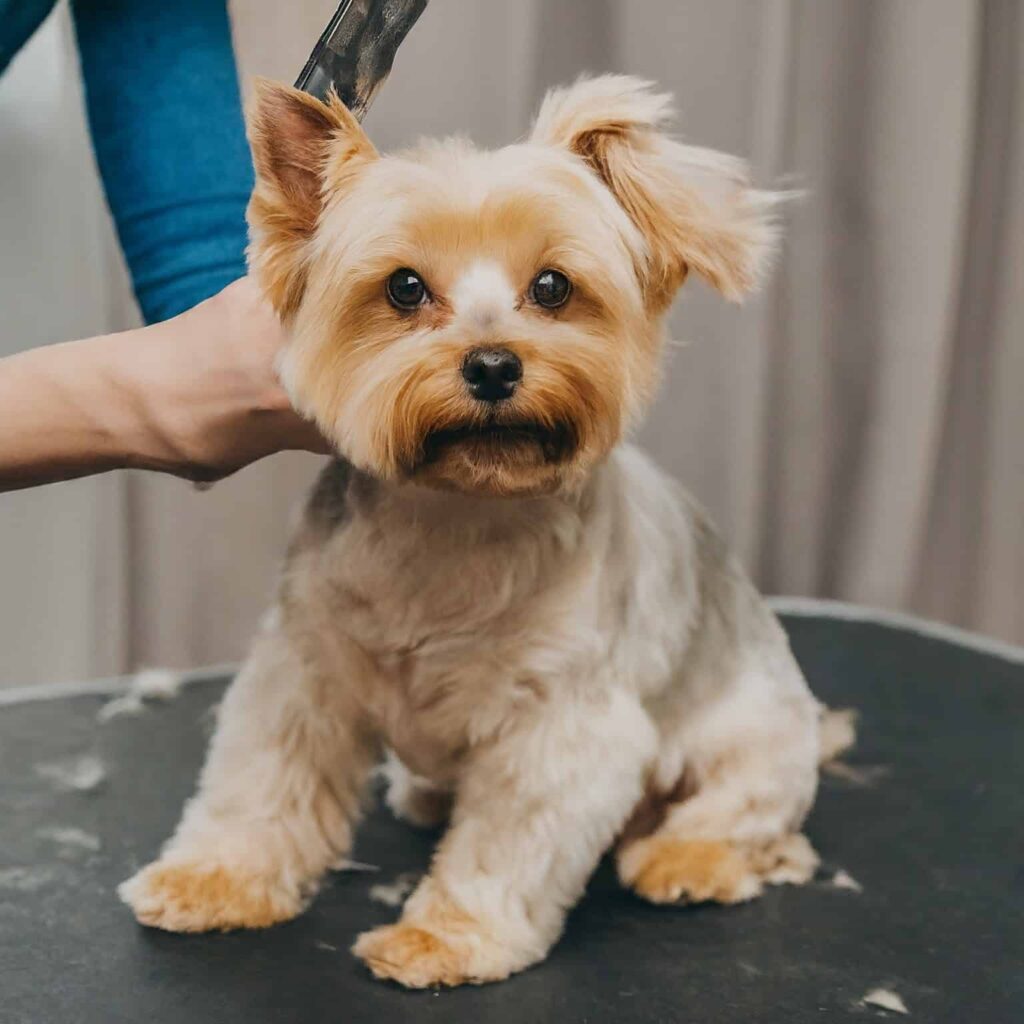
Bathing Your Dog
Choosing the Right Shampoo
It’s crucial to pick the right shampoo. Earthbath Oatmeal & Aloe Shampoo ($17 for 16 ounces) is a great choice for dogs with sensitive skin. It’s fragrance-free and gentle on the skin.
Nature’s Miracle Odor Control Shampoo ($12 for 16 ounces) effectively controls odor. Burt’s Bees Oatmeal Shampoo is budget-friendly at $8 for 16 ounces and works well for soothing dry skin.
Proper Bathing Techniques
Start by brushing your dog to remove any loose fur and tangles. Use lukewarm water to wet their coat thoroughly. Apply a small amount of shampoo and work it into a lather, avoiding their eyes and ears. Rinse well to remove all the soap.
You might need to rinse a couple of times to ensure there’s no residue left. Towel dry your dog; if they tolerate it, use a blow dryer on a low, cool setting.
Drying Methods
Drying is an important step. A good microfiber towel helps absorb water quickly. A grooming dryer like the SHELANDY Dog Grooming Dryer is effective for long-haired breeds.
Prices pulled from the Amazon Product Advertising API on:
Product prices and availability are accurate as of the date/time indicated and are subject to change. Any price and availability information displayed on [relevant Amazon Site(s), as applicable] at the time of purchase will apply to the purchase of this product.
It’s powerful and significantly reduces drying time. To prevent skin issues, ensure your dog is completely dry, especially if it has a thick coat.
Dealing with Reluctant Dogs
Bathing a reluctant dog requires patience. Start with short, positive experiences. Use treats and praise to make the process pleasant. If your dog is anxious, try bathing them outside with a hose during warm weather. Keeping bath time calm and positive helps reduce their fear over time.
Brushing and De-matting
Different Types of Brushes
The type of brush you use depends on your dog’s coat. A slicker brush ($15) works well for most coat types. A pin brush is ideal for long-haired dogs. Short-haired breeds benefit from a bristle brush. The Furminator deShedding Tool ($20-$45) is excellent for reducing shedding.
Techniques for Different Coat Types
Brushing techniques vary by coat type. For long-haired breeds, start at the tips and work up to the roots to avoid pulling on tangles. For short-haired breeds, brush in the direction of hair growth. Regular brushing, at least once a week, helps keep their coat healthy and reduces shedding.
How to Handle Mats and Tangles
Mats and tangles can be tricky. Use a detangling spray and a slicker brush to work through them gently. A de-matting tool or scissors with rounded tips may be necessary for severe mats. Be patient and work slowly to avoid hurting your dog. Regular brushing helps prevent mats from forming.
Tips for Sensitive Areas
Sensitive areas like the belly, ears, and tail require extra care. Use a gentle touch and a softer brush for these areas. If your dog resists, take breaks and offer treats to make the experience positive. Regularly checking these areas helps you catch mats or skin issues early.

Nail Clipping and Paw Care
Importance of Nail Trimming
Regular nail trimming is essential for your dog’s health. Long nails can cause discomfort and pain. They can curl into the paw pads, leading to infections. Overgrown nails can also affect your dog’s gait, potentially leading to joint issues. Aim to trim your dog’s nails every three to four weeks.
Tools Needed
For small dogs, Shiny Pet Nail Clippers are a good option. They cost around $13 and have stainless steel blades that provide a precise cut. Epica Professional Pet Nail Clippers, priced at about $10, are highly recommended for large dogs due to their sharp blades and ease of use.
These clippers have a safety stop to prevent cutting too many nails, which is crucial to avoid injuring them quickly. For medium to large dogs, the Hertzko Professional Dog Nail Clipper, which comes with a nail file, is a solid choice at around $25.
Step-by-Step Guide
- Gather Supplies: Get your clippers, a styptic powder (in case of bleeding), and treats.
- Calm Your Dog: Make sure your dog is relaxed. A walk before trimming can help.
- Hold the Paw Firmly: Hold your dog’s paw and press gently to extend the nails.
- Trim Carefully: Clip a small portion of the nail at a time. Look for the quick, pink area within the nail. Avoid cutting into the fast.
- Reward Your Dog: Treat your dog after each nail to make the experience positive.
Checking for Paw Injuries
Regularly check your dog’s paws for cuts, thorns, or other injuries. Clean any cuts with a mild antiseptic. If you notice signs of infection, such as redness or swelling, consult your vet.
Ear Cleaning
Recognizing Healthy Ears
Healthy ears are clean, odor-free, and pale pink. Regularly check your dog’s ears for signs of redness, swelling, or unusual discharge. These can indicate infections or other issues that may need veterinary attention.
Cleaning Methods
- Choose the Right Cleaner: Use a vet-recommended ear-cleaning solution. Avoid using hydrogen peroxide or alcohol, which can irritate the ear canal.
- Apply the Cleaner: Gently lift your dog’s ear flap and apply a few drops of the cleaner into the ear canal.
- Massage the Ear: Massage the base of the ear for about 20-30 seconds to help the cleaner break down wax and debris.
- Wipe Away the Dirt: Use a cotton ball or gauze pad to remove the cleaner and debris from the ear canal opening. Avoid using cotton swabs as they can push debris further into the ear.
Products to Use and Avoid
Stick to products specifically formulated for dogs, like Vet’s Best Ear Relief Wash & Dry. Avoid using human ear cleaners or homemade solutions unless advised by a vet. Products like Earthbath All Natural Pet Ear Wipes are also a gentle option for regular ear maintenance.
Identifying Ear Infections
Watch for signs of ear infections, such as:
- Frequent scratching at the ears
- Redness or swelling inside the ear
- Unpleasant odor
- Head shaking or tilting
If you notice any of these symptoms, consult your vet for appropriate treatment. Early intervention can prevent more serious issues and keep your dog comfortable.
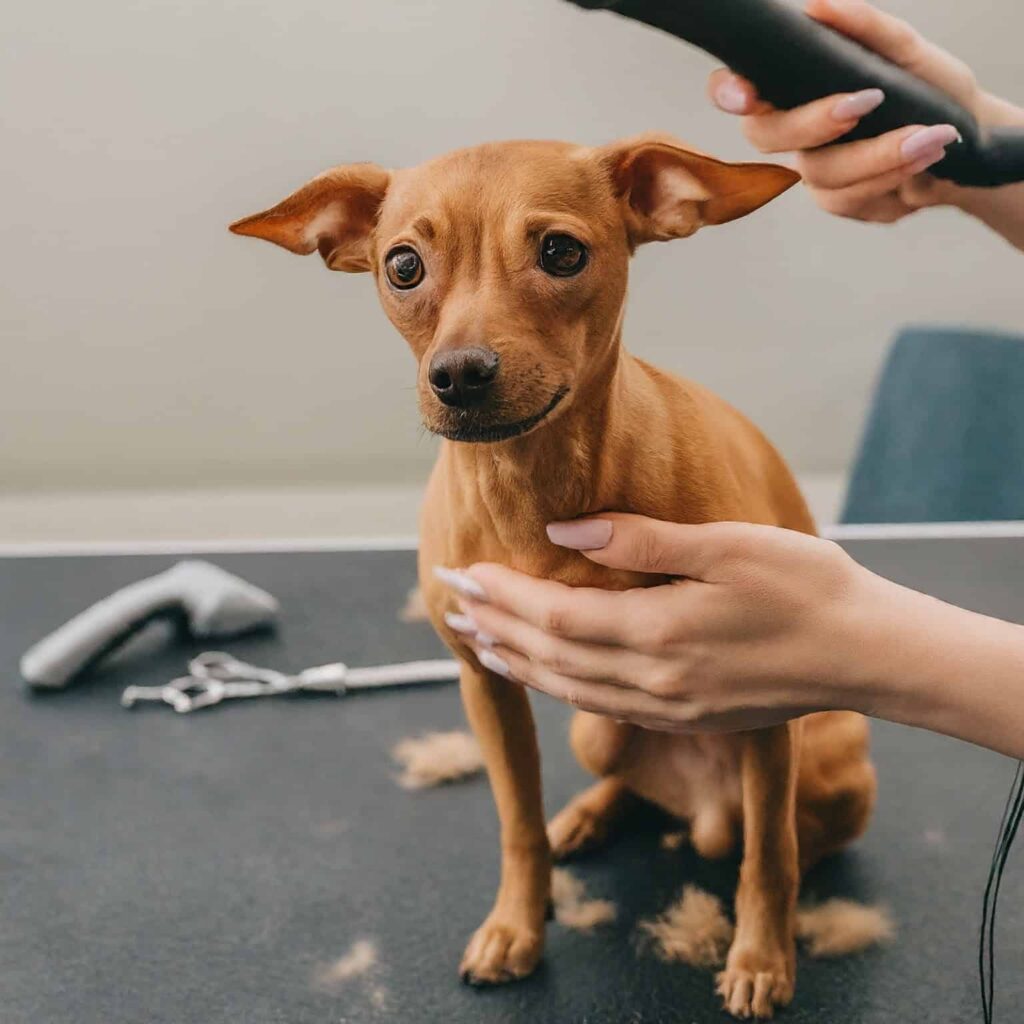
Dental Hygiene
Importance of Oral Care
Maintaining your dog’s dental hygiene is crucial. Poor oral care can lead to tartar build-up, bad breath, and serious health issues like gum disease and infections. Regular brushing and dental check-ups keep your dog’s mouth healthy and can prevent these problems.
Tools for Cleaning Teeth
You need the right tools for effective cleaning. A good dog toothbrush costs about $5-$10. These brushes are designed to fit comfortably in your dog’s mouth. Dog toothpaste, safe for dogs to swallow, typically costs around $6-$10. Never use human toothpaste, as it can be harmful to dogs.
How to Introduce Tooth Brushing
Start by letting your dog taste the toothpaste. Use your finger to rub it on their teeth and gums gently. Gradually introduce the toothbrush by placing it in their mouth for short periods. Be patient and use lots of praise and treats. Gradually increase the brushing time as your dog gets used to it.
Signs of Dental Issues
Watch for signs of dental problems like bad breath, excessive drooling, or difficulty eating. Red or swollen gums and brownish teeth also indicate issues. Regularly check your dog’s mouth and consult your vet if you notice these symptoms. Early detection helps prevent serious problems.
Eye Care
Recognizing Healthy Eyes
Healthy eyes are clear and bright, with no discharge or redness. Regularly check your dog’s eyes for changes. Cloudiness, redness, or excessive tearing can indicate health issues that need veterinary attention.
Cleaning Around the Eyes
Use a soft, damp cloth or a pet-safe wipe to clean around your dog’s eyes. Gently wipe away any dirt or discharge, moving away from the eyes. Be gentle to avoid irritating. Regular cleaning helps prevent infections and keeps the eye area healthy.
Common Eye Issues
Dogs can suffer from several common eye problems, including conjunctivitis, dry eye, and cataracts. If your dog frequently rubs its eyes, squints, or has a noticeable discharge, consult your vet. Early treatment can prevent more serious conditions.
Products for Eye Care
Pet-safe eye wipes are useful for regular cleaning and cost about $10-$15. Your vet may recommend specific eye drops or ointments for more serious issues. Always follow your vet’s advice for treating eye conditions to ensure your dog’s comfort and health.

Coat Conditioning
Importance of Conditioning
Conditioning your dog’s coat is essential for keeping it healthy and shiny. Conditioners help to moisturize the skin, reduce tangles, and make brushing easier. They also help maintain the natural oils in your dog’s fur, keeping it soft and smooth.
Types of Conditioners
There are several types of conditioners available:
- Leave-in Conditioners: Easy to apply and do not require rinsing. These are great for regular use and provide continuous moisture.
- Rinse-out Conditioners: Applied after shampooing and rinsed out. These are ideal for deeper conditioning.
- Spray Conditioners: Convenient for quick touch-ups and detangling. They are useful for in-between baths.
How to Apply Conditioner
After thoroughly shampooing and rinsing your dog, apply the conditioner according to the product instructions. Massage it gently into the coat, avoiding the eyes and ears. Leave it on for the recommended time, usually a few minutes, then rinse thoroughly. For leave-in and spray conditioners, apply evenly and brush through the coat.
Frequency of Conditioning
The frequency of conditioning depends on your dog’s coat type and needs. Long-haired breeds or dogs with dry skin benefit from conditioning after every bath, while short-haired breeds may need it less frequently. Adjust based on your dog’s specific needs to maintain a healthy coat.
Dealing with Shedding
Understanding Shedding Cycles
Dogs shed their fur as part of their natural growth cycle. Understanding this cycle helps you manage shedding more effectively. Most dogs shed year-round, with increased shedding in the spring and fall as they change their coats for the new season.
Tools for Managing Shedding
Effective shedding management starts with the right tools:
- De-shedding Tools: Tools like the Furminator reduce loose hair significantly. These tools reach deep into the undercoat without damaging the topcoat.
- Brushes and Combs: Regular brushing with a slicker or bristle brush helps remove loose hair before it falls out. Different brushes suit different coat types.
- Vacuum Attachments: Some vacuums come with pet grooming attachments that help remove loose hair directly from the coat.
Tips for Reducing Shedding
Regular grooming is the key to reducing shedding. Brush your dog at least once a week, often during shedding seasons. Bathing your dog with an anti-shedding shampoo can also help. Ensure your dog’s diet is rich in omega-3 and omega-6 fatty acids, which promote healthy skin and coat.
Products to Help with Shedding
Products like the Furminator deShedding Tool and anti-shedding shampoos can make a significant difference. Supplements containing omega fatty acids also support coat health. Regularly using these products helps keep shedding under control and your home cleaner.
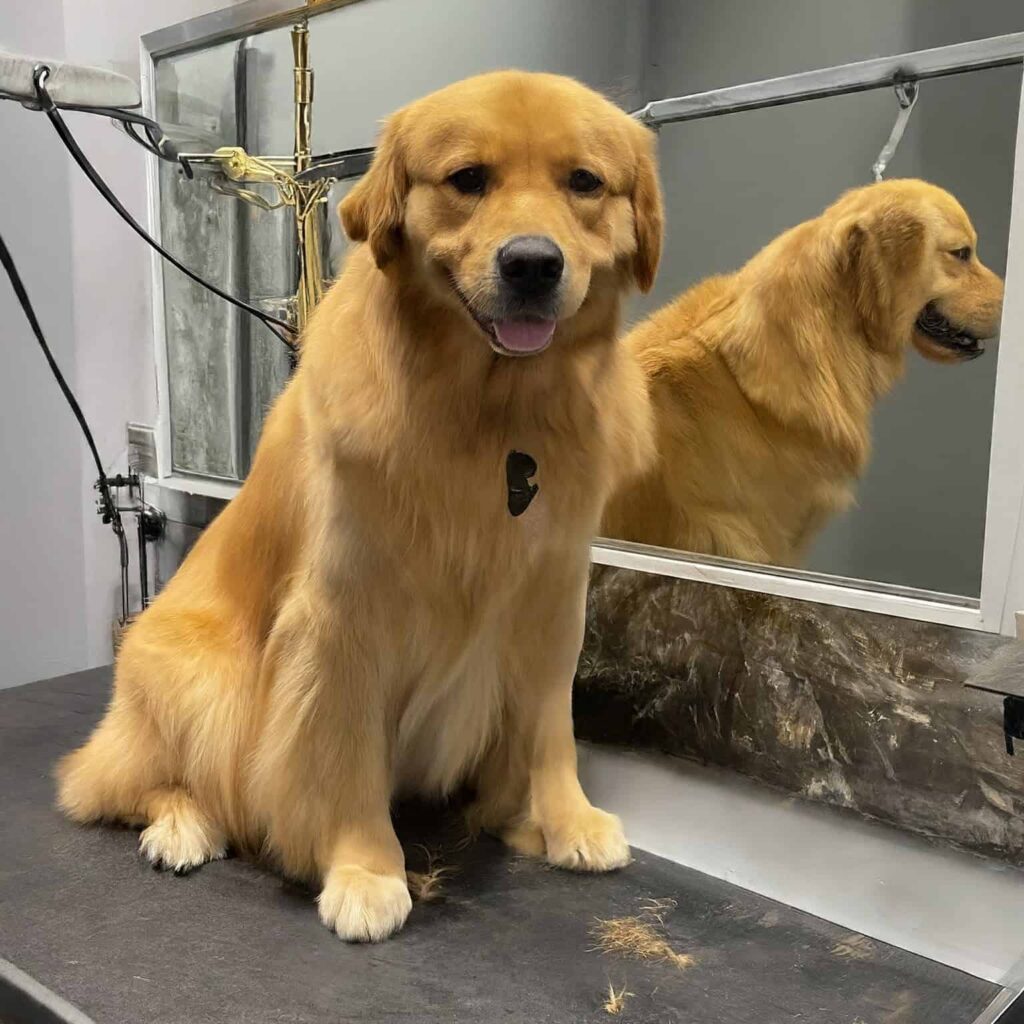
Skin Care
Recognizing Healthy Skin
Healthy dog skin is smooth and free of redness, flaking, or bumps. It should also not have a strong odor or excessive oiliness. Regularly inspect your dog’s skin during grooming sessions to catch any issues early.
Common Skin Problems
Dogs can experience various skin problems. Here are a few common ones:
- Allergic Dermatitis: Caused by allergies to food, fleas, or environmental factors. Symptoms include itching, redness, and inflammation.
- Hot Spots are red, inflamed areas that can ooze and become infected. They often occur due to excessive licking or scratching.
- Yeast Infections: Characterized by itchy, irritated, or discolored skin, usually in moist areas like ears and paws.
- Seborrhea: Causes oily, scaly, and flaky skin. It can be a genetic condition or a symptom of other health issues.
Products for Skin Care
Using the right products helps maintain your dog’s skin health. Medicated shampoos and conditioners can address specific issues, such as seborrhea or yeast infections.
For example, Earthbath Oatmeal & Aloe Shampoo is excellent for soothing dry skin. To avoid irritation, always choose products designed specifically for dogs.
When to See a Vet
Consult your vet if you notice persistent itching, redness, sores, or hair loss. Early intervention prevents minor issues from becoming serious problems. Your vet can diagnose the condition and recommend appropriate treatments, such as medicated shampoos, antibiotics, or dietary changes.

Grooming Different Breeds
Breed-Specific Grooming Needs
Different dog breeds have unique grooming requirements. Understanding these needs helps keep their coat healthy and reduces shedding.
Tools for Specific Breeds
- Short-Haired Breeds: Use a bristle brush to remove loose hair and a rubber curry brush to stimulate the skin. Breeds like Beagles and Boxers benefit from these tools.
- Long-Haired Breeds: A slicker brush and a de-matting tool are essential. Breeds like Golden Retrievers and Shih Tzus need regular brushing to prevent mats and tangles.
- Double-Coated Breeds: Use an undercoat rake and a slicker brush. Breeds like Huskies and German Shepherds shed heavily and require thorough brushing during shedding seasons.
Techniques for Different Coats
- Smooth Coats: Brush once a week to remove dirt and loose hair. Wipe the coat with a damp cloth to keep it shiny.
- Curly Coats: Breeds like Poodles require regular brushing and professional grooming every 6-8 weeks to maintain their coat.
- Wire Coats: Use a stripping comb to remove dead hair. Breeds like Terriers need hand-stripping to maintain coat texture.
Resources for Breed-Specific Tips
Consult breed-specific grooming guides and talk to professional groomers for tips tailored to your dog’s breed. Online resources and dog grooming books can provide detailed instructions and product recommendations.
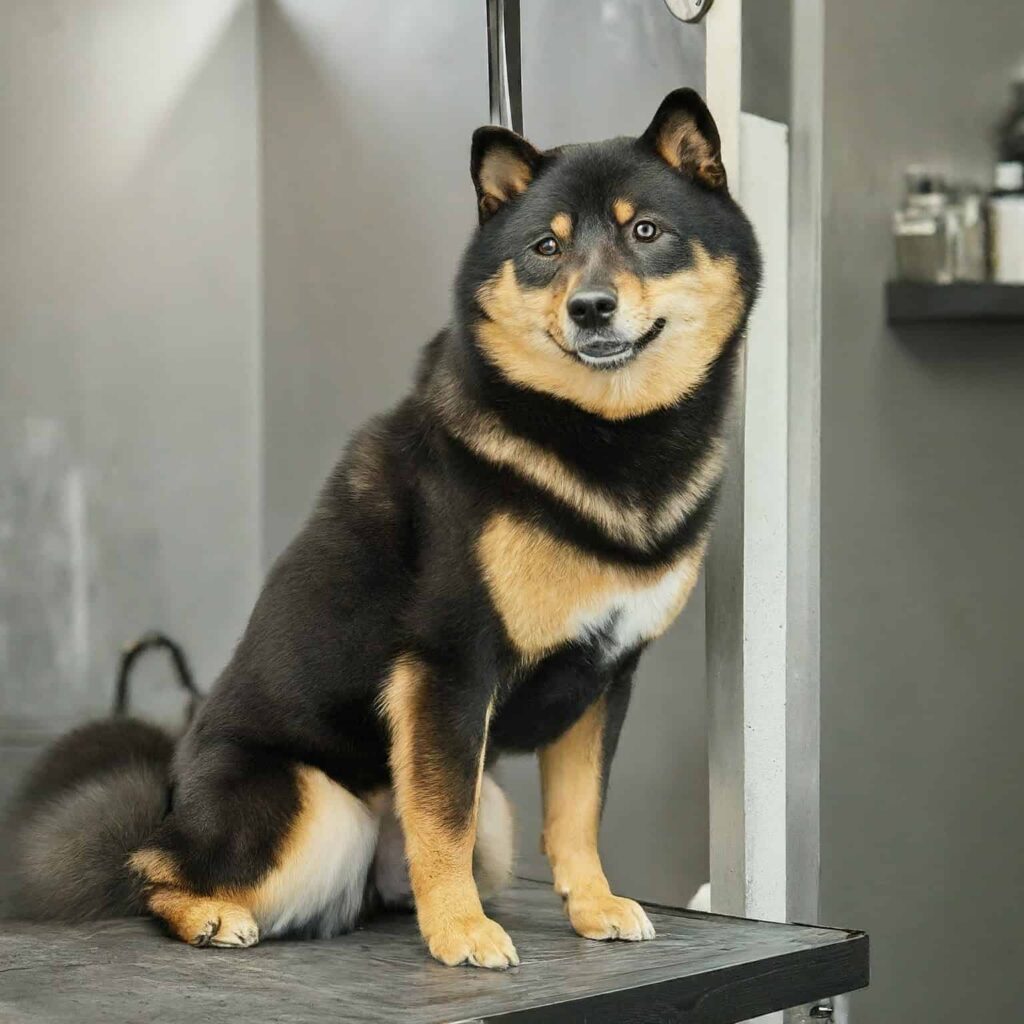
Dog Grooming Self-Service: Creating a Routine
Importance of a Grooming Schedule
A consistent grooming schedule is vital for your dog’s health and well-being. Regular grooming helps keep your dog’s coat clean and reduces shedding. It also allows you to check for any health issues, like skin problems or parasites. Establishing a routine makes grooming easier and more enjoyable for you and your dog.
How Often to Groom
The frequency of grooming depends on your dog’s breed, coat type, and lifestyle:
- Daily: Dogs with long, silky coats or those prone to tangles and mats benefit from daily brushing.
- Weekly: Short-haired breeds and dogs with smooth coats typically need brushing once a week.
- Monthly: Bathing should generally occur once a month unless your dog gets particularly dirty or has skin conditions requiring more frequent baths.
Adjusting the Routine for Seasons
Dogs shed more in spring and fall. During these times, increase brushing frequency to manage loose hair. Use a de-shedding tool like the Furminator to remove the undercoat effectively. Regular baths with anti-shedding shampoo can also help manage seasonal shedding.
Keeping a Grooming Log
Maintaining a grooming log helps you track your dog’s needs and identify any patterns or issues. Note dates of baths, nail trims, ear cleanings, and any skin or coat problems you observe. This record can be valuable during vet visits and helps ensure you don’t overlook any aspect of your dog’s grooming.
Establishing a grooming routine is essential for your dog’s comfort and health. Regular grooming sessions keep your dog looking good and allow you to monitor their health closely.

